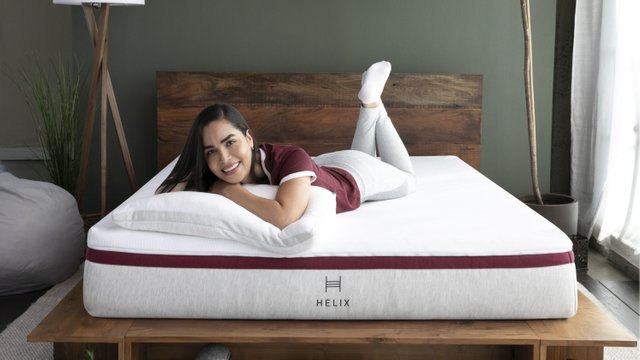Sleep Smarter: A Complete Guide to Finding Your Perfect Mattress Match
Finding the right mattress can be life-changing. After all, we spend roughly a third of our lives sleeping, and the quality of that sleep can directly impact everything from our energy levels and mood to our long-term health. But with so many types, brands, and features on the market, how do you choose the perfect mattress for your unique sleep needs?
Whether you're a side sleeper, have back pain, or simply want a more comfortable night’s rest, this guide breaks down what to consider before making a decision. Let’s help you find the mattress that meets your body—and your sleep style.
- Know Your Sleeping Position
One of the first steps in choosing the right mattress is understanding your primary sleep position. The way you sleep affects the kind of support and cushioning your body needs.
Side Sleepers: You’ll need a mattress that contours to your curves, particularly your shoulders and hips. A medium-soft to medium-firm mattress made of memory foam or a hybrid design usually works best.
Back Sleepers: Look for a mattress that supports your spine’s natural curve without sagging. Medium-firm to firm mattresses often provide the necessary lumbar support.
Stomach Sleepers: To avoid arching your back too much, go with a firmer mattress that keeps your body aligned and prevents your midsection from sinking in.
Combination Sleepers: If you move around during the night, a responsive mattress like a latex or hybrid option may offer the best of both comfort and mobility.
- Consider Your Body Type and Weight
Your body weight affects how a mattress feels to you. For example:
Lighter individuals (<130 lbs) tend to prefer softer mattresses, as firmer options might not compress enough to relieve pressure points.
Average-weight sleepers (130–230 lbs) do well with medium-firm mattresses.
Heavier individuals (230+ lbs) need more support, so firmer mattresses with reinforced edges and durable coil systems are ideal.
Choosing the right firmness level helps ensure that your spine stays aligned and your pressure points are cushioned appropriately.
- Pick the Right Mattress Type
Each mattress type offers unique benefits. Here's a quick breakdown:
Memory Foam: Great for contouring and pressure relief. It’s a popular choice for side sleepers and those with joint pain. Look for gel-infused or open-cell foam to help with heat regulation.
Innerspring: These traditional coil mattresses offer strong support and bounce but can lack pressure relief. They’re best for stomach sleepers or people who like a firmer feel.
Latex: Naturally cooling and responsive, latex is durable and eco-friendly. It provides a good balance of support and comfort, ideal for people with allergies or back pain.
Hybrid: Combining coils and foam or latex, hybrids aim to deliver the best of both worlds—support, comfort, and airflow. They’re a good pick for almost any sleeper.
Airbeds (not the inflatable kind for guests): These use adjustable air chambers for customizable firmness. They’re ideal for couples with different preferences.
- Think About Special Sleep Needs
If you have specific health concerns, certain mattress features can make a big difference:
Back Pain: Medium-firm to firm mattresses with zoned support can help maintain spinal alignment.
Allergies: Choose hypoallergenic materials like natural latex or organic cotton.
Hot Sleepers: Go for mattresses with cooling tech, such as gel-infused foam, breathable covers, or airflow channels.
Couples: Motion isolation is key if your partner tosses and turns. Memory foam or hybrid mattresses usually perform well here.
- Set Your Budget
Mattresses come in all price ranges—from budget buys under $500 to luxury models over $3,000. While price doesn’t always reflect quality, it's important to balance value with comfort and durability.
Budget Range ($300–$700): You’ll find decent memory foam and innerspring options.
Mid-Range ($800–$1,500): This sweet spot includes many high-quality hybrid and latex models with advanced features.
Premium ($1,600 and up): Expect luxury materials, longer warranties, and added support features.
Remember: a good mattress is an investment in your health. Don’t compromise on quality if your sleep or pain relief depends on it.
- Try Before You Buy (or at Least Get a Trial)
Many mattress companies now offer sleep trials ranging from 90 to 365 nights, allowing you to test the mattress in your own home. If you don’t love it, you can return it hassle-free. Also, check warranties—most quality mattresses come with 10 to 25-year warranties.
If you’re shopping in-store, lie down in your usual sleep position for at least 10–15 minutes to get a real feel.
- Check for Certifications and Materials
Look for trusted certifications that verify the mattress is safe and non-toxic, such as:
CertiPUR-US® (for foam mattresses)
OEKO-TEX® (for textiles and fabrics)
GOLS/GOTS (for organic latex and cotton)
Also, take time to understand the layers and construction materials. A good mattress should be built with durable, supportive, and breathable components.
Final Thoughts: Personalized Comfort is Key
There’s no one-size-fits-all mattress. The “perfect” mattress depends entirely on your individual sleep style, health concerns, and comfort preferences. Take the time to evaluate your needs, test a few options if possible, and don’t be afraid to invest in quality.
